The first issue of Kevin Eastman and Peter Laird’s Teenage Mutant Ninja Turtles (TMNT) was published in May of 1984. Since then, the TMNT have gone on to achieve worldwide mainstream success thanks not only to their original comics run but also a number of influential cartoons, videogames, and wave-upon-wave of action figures. Even now, the TMNT continue to be an influential and popular commodity, proving that some fads don’t die out…they just get stronger!
Released: 20 March 2007
Developer: Ubisoft Montreal
Also Available For: GameCube, Nintendo DS, Nintendo Wii, PC, PlayStation 2, PlayStation Portable (PSP)
The Background:
The Teenage Mutant Ninja Turtles (known as Teenage Mutant Hero Turtles here in the United Kingdom) dominated playgrounds during my youth thanks to the super popular cartoon and toys, but the impact of their videogames cannot be understated. Konami’s original arcade title was one of the defining titles of the beat-‘em-up genre, the Nintendo Entertainment System (NES) title all-but defined what it meant to be “NES Hard”, and the Heroes in a Half-Shell saw success in a variety of genres. Although the critical and commercial mauling of their much-lambasted third live-action venture meant it took the better part of fifteen years for them to return to cinema screens, new TMNT videogames, cartoons, and toys continued to be produced. With TMNT (Munroe, 2007) set to be the franchise’s big return to cinema, one that would encompass different aspects of the franchise, it was only natural that it was accompanied by a videogame adaptation; this was the style of the time, after all. At this point, the licensing rights were owned by Ubisoft and the developers sought to take the family-orientated nature of the TMNT and translate it into a brawler for unique gameplay mechanics. Unfortunately, TMNT was met with mixed reviews that criticised its simplicity, repetitive combat, and lack of content. Direct comparisons were made to the arcade games of yesteryear and the reviews felt as though TMNT failed to measure up to these standards as, despite capturing the visual style of the movie, the focus on platforming and mind-numbing gameplay failed to excite compared to what had come before.
The Plot:
Following the defeat of Oroku Saki/The Shredder, the TMNT have drifted apart; leader Leonardo is off training in Central America and hot-headed Raphael is secretly busting heads as a masked vigilante known as the Nightwatcher. However, the brothers come together again when mythical creatures rampage through New York City as part of an ancient ritual.
Gameplay:
TMNT falls into the rare and frankly bonkers category of being a TMNT videogame that is focused solely on a single player experience, despite the fact that many levels see you not only switching between the four brothers but also pulling off team-up attacks! Instead, the game is framed as the TMNT reminiscing about their newest big-screen adventure alongside their master and father-figure, Splinter. The player controls each of the Turtles individually, and eventually gets access to all four of them, across sixteen story-based levels heavily inspired by locations and events from the movie and focused heavily on combat and, surprisingly, a great deal of platforming. The player can jump with A (executing a double jump if A is pressed again in mid-air), use Y to knock enemies flying with a spin attack (or hold the button for a flurry of attacks), strike hard and fast with their signature weapons by pressing B (holding it for an overpowered dash attack that sees you automatically zip towards any nearby enemies or mashing the button to string together basic combos), and switch characters, when available, with X. The player can also use the shoulder buttons to dodge and block when in combat, though I had no need for this for the most part, and holding one of these shoulder triggers in conjunction with X pulls off co-operative attacks, such as tossing your Turtle across large gaps or at enemies.
As you’d expect from a TMNT videogame, the four mutants all look and play very similar and are separated by their slightly different voices and quirky personalities and their signature weapons. The very nature of these weapons means that characters like Leonardo and Donatello have greater reach than Raphael and Michelangelo and, for the most part, TMNT doesn’t get more complicated than categorising Leo as the “balanced” character and having Mikey focus more on executing a flurry of melee attacks. However, they do have distinctive special abilities that can be pulled off by holding the Right Bumper and pressing X or B: Leo can phase through bars, Don can “bo vault” across large gaps, Mikey spins his nunchakus like helicopter blades to float for a short period of time, and Raph can climb certain walls (as indicated by glowing red rectangles and dialogue prompts) with his sais. The player will also get to control Raph’s armoured alter ego, the Nightwatcher, at various points. Although he plays very similar to Raph and the others, he builds up an additional “Rage Meter” that, when full, allows him to pull off an area blast with RB and B or gives him a power boost when only partially full. Success in combat awards you stars and builds your “Family Bond Meter”, allowing you to pull off the aforementioned team attacks and a screen-clearing “Mega Attack”, and you can execute a ground punch to get some breathing room by pressing B in mid-air. You also have a decent variety of traversal options in the game’s platforming sections. The TMNT can grab ledges to shimmy across gaps or simply run along walls for a short period. They can also scale vertical walls using handholds, swing from poles, and, if you stand completely still, your Turtle will meditate and slowly regain health (though the Nightwatcher seems exempt from this).
There’s no real incentive to do this, however, as you’re not only penalised with a lower grade if you take too long to complete stages but you can simply mash the A button when your health is drained to return to the fight, with no danger of failure at any time. Each stage is incredibly linear and filled with checkpoints, allowing you to easily respawn if you miss a jump or plunge to your doom, and you can simply mash A if you get stuck in toxic waste. Stages demand very little from you other than to follow a set path, hopping across rooftops, fences, and from platform to platform in a shameless aping of Frogger (Konami, 1981) as you traverse the game’s limited and repetitive environments. Occasionally, you’ll encounter various hurdles to break up the monotony: the Foot Clan will have placed trip wires that activate arrow hazards, the game switches to a 2.5D perspective a few times as you scale the outside of buildings, you’ll hop to temporary or moving platforms, and at one point have to quickly scale a shaft, battling with the stubborn camera, to avoid regular laser blasts. A couple of other times, you’ll have to race towards the camera Crash Bandicoot-style (Naughty Dog, 1996) as the environment crumbles around you, avoid bursts of flame, electrified hazards, and laser traps, run through a super simplistic hedge maze, and cross the New York skyline using parade balloons but it all gets very samey very quickly. Combat is much of the same; each combat encounter takes place in a pre-set area, meaning a variety of goons come at you at specific points and you’re forced to fend them off to progress. I had very little use for the block or dodge mechanics and found it much easier to simply knock the enemies away, charge up an attack, and then pummel them with simple weapon combos in order to move on as quickly as possible.
Graphics and Sound:
Graphically, TMNT is a bit of a mixed bag; the four Turtles look really good, emulating their big-screen counterparts and even their voice actors reprise their roles. Depending on the story chapter you’re playing, the TMNT will slightly change up their looks; Leo sports a cloak when in the jungle, for example, and Mikey’s first stage sees him garbed in his “Cowabunga Carl” costume, though there are no options to unlock these as permanent skins. As you play, the TMNT will offer the usual commentary praising your fighting skills but also chime in to advance the story with the benefit of hindsight. Unfortunately, the music is incredibly generic and, like the movie, opts for more of a sound-a-like than anything resembling the classic TMNT theme song. The goons you fight aren’t very visually interesting either, and the game’s cutscenes have a serious case of identity crisis. For the most part, the story progresses using barely-animated comic book panels that are visually inconsistent with the source material. In-game cutscenes are few and far between, with only a handful occurring near the end of the game, and, most surprisingly of all, TMNT features very little film footage, and what is there is grainy and oddly placed.
Most disappointing of all is the level variety. New York City has never looked more blocky and deserted in a TMNT videogame; you’ll constantly be running and jumping across rooftops and alleyways that all look and feel very similar, despite the time of day changing or tossing in parts of Chinatown and recognisable landmarks in the background. When you’re not on the streets or rooftops, you’re in the sewers, hopping to platforms or running along the tunnel walls, or in Max Winters’ high-tech building riding elevators and avoiding lasers. There is a part where you enter a Chinese-style temple full of lily pads and ornate decorations, which was kind of interesting, and you’ll have to traverse water wheels and a steel mill full of molten lava in order to progress, too. Generally, the game runs okay but I did experience odd periods of slowdown and it’s all very bland and by-the-numbers and feels very padded out, but things do get visually interesting when playing as the Nightwatcher. Not only is Raph’s vigilante persona chunkier and a little different to control but his levels all take place in a black and white filter that emulates the original Mirage Comics and helps to break up the visual repetition of the game. There’s also a point where Leo confronts the Nightwatcher and chases him across the city; when Leo is ambushed, the player switches to controlling an unmasked Nightwatcher and backtracking to help their brother, which did mix things up but these cutscenes were let down by the rigidity of the in-game models and the reliance of pop-in character portraits rather than mouth animations.
Enemies and Bosses:
There are a few different factions of enemies that will oppose you throughout TMNT, none of them being all that interesting conceptually, visually, or as enemies. In the jungles, you’ll encounter machete- and gun-wielding mercenaries; street punks come at you with blunt weapons and bravado; and you’ll occasionally encounter more tech-orientated goons in the sewer who jab at you with electrified sticks. Naturally, you’ll also battle the Foot Clan on more than one occasion; these black-clad ninjas attack with swords and arrows but aren’t much of a threat, despite their numbers. Other enemies may toss projectiles, such as acid beakers, and you’ll generally face far more goons as the Nightwatcher in order to build up his rage meter faster, but there aren’t any of the classic TMNT enemies to find here, like Mousers or the Stone Warriors, most likely because they didn’t feature in the movie and the developers were hyper-focused on bombarding you with 3D platforming sections.

Considering the source material revolves around thirteen mythical beasts rampaging through New York City, you’d think that TMNT would include a decent variety of boss battles but, sadly, you’d be mistaken. You’ll encounter seven bosses throughout the game; four of those are fought on two separate occasions, which is already pretty cheap, but you also won’t even defeat a boss until your reach the boss gauntlet at the end of the game. The first boss you encounter is General Gato, who hops around a circular arena tossing spines at you, lunging at you with blade swipes, or charging up a spray of projectiles in the middle of the arena. Simply dodge and jump over his projectiles and deliver a beatdown when he comes close and you’ll soon have him on the run. Next, you encounter the Yeti crashing his way through buildings before settling in a construction site. This ape-like brute throws slow, powerful haymakers, delivers a ground slam, and goes absolutely mental after you drain enough of his health but, again, flees before you can deliver a decisive blow. General Mono is easily the worst of the bosses; this hulking brute wields a massive hammer that he constantly smashes to the ground to create shockwaves; he also leaps into the air to come crashing down on you and is easily able to tank your combos. The fourth mystical creature you battle is Serpientei, easily the most agile and versatile of the group thanks to her ability to teleport, spit acid, race at you with a dashing strike, and unleash a charged strike. Halfway through the fight, Serpientei spews acid on Raph and the other TMNT will arrive to help, allowing you to make full use of your Mega Attacks to finish her off.
All four of these bosses reappear in a boss rush at the end of the game and are fought one after the other, with checkpoints and a barrage of lightning to avoid between each one. This time, you fight them in a circular arena that, if you fall out of, will see you instantly fail and have to retry from the last checkpoint, something which is incredibly frustrating when battling General Mono again. Of the four bosses, this guy easily poses the biggest problem as he absorbs your attacks like a sponge and unleashes a massive explosive hammer slam that will instantly KO you off the arena unless you interrupt his attack by tossing a Turtle at him. Despite only briefly appearing in the movie, you’ll also battle the TMNT’s archenemy, the Shredder, courtesy of a flashback; much like Shredder battles from the TMNT’s arcade games, Saki summons duplicates of himself and tosses kunai, but he’s not a very intimidating foe and is easily dispatched without much trouble. Finally, after defeating the Shredder and dealing with the four mystical creatures once again, you’ll battle General Augila, who immediately reduces the size of the boss arena and proves invulnerable to conventional attack. General Augila will attack with a spread of laser beams, tossing out multiple arrows, raining fireballs, and firing energy waves at you while spinning his sword; he also constantly floats around the arena between attacks, making him a difficult target, and can restore his health. However, you’ll notice that each of his attacks is colour-coded and this is your key to victory; simply switch to the appropriate Turtle and unleash your Mega Attack to damage him and he goes down without much fuss (certainly easier for me than the second battle with General Mono!)
Power-Ups and Bonuses:
Strangely, unlike pretty much every single TMNT videogame, there aren’t any power-ups or pick-ups in TMNT. As the Turtles restore their health through meditation and there is no life system, you won’t be picking up pizzas or extra lives and there are no temporary power-ups to find; you simply need to pummel enemies to build your meters and that’s it. There are no fire hydrants to attack, no additional weapons to pick up, no explosive barrels, or anything like that, making it a bit of a step back compared to its arcade predecessors.
Additional Features:
There are twenty-three Achievements to grab here, and you should have no trouble earning all of them in no time at all. Sixteen of them are awarded simply for completing each of the game’s stages; you’ll get another four for using each of the TMNT’s special moves, one for finishing a level without taking damage, one for doing a co-op attack, and one for collecting your first Gold Coin. There are no difficulty settings here so you don’t have to worry about finishing the game on harder modes and, while you do get a rank at the end of every stage, there are no Achievements tied to getting any of these, making these Achievements a breeze to get. Every level contains a number of Silver Coins; collecting these adds to your rank and allows you to purchase “goodies” from the main menu. Sadly, rather than these unlocking new skins or characters (April O’Neil and Casey Jones are nowhere to be found here), you simply unlock big head mode and daft weapons and sound effects. Clearing a level allows you to replay it and grab a Gold Coin for more points and that Achievement and also unlocks a virtual reality Challenge Map, where you must complete a wireframe obstacle course in a time limit (though, again, there’s nothing to gain from this).
The Summary:
I have a certain expectation when it comes to TMNT videogames; it’s not exactly a high standard or anything, I just expect them to be fun, colourful, arcade-style brawlers and not much else. In this respect, I was fully expecting to still enjoy TMNT despite it having the stigma of being a videogame adaptation, but this game really misses the mark. As much as I enjoy the movie it’s based on, I can’t say the same for the game, which pads out its playtime with an overabundance of visually boring platforming sections and repetitive combat. It’s not long before you’ve seen everything TMNT has to offer and the level of challenge here is so low that you’ll quickly become bored by it all. There’s no skill to the game, no new moves or power-ups to earn, and you can’t even play it with a friend, which has to be some kind of cardinal sin for a TMNT videogame at this point. Bland environments and a stubborn unwillingness to expand or deviate from the source material clashes with a disjointed visual style and a lack of content from the movie, making the whole experience very basic and slapped together. The game controls well and, at times, does look pretty good, but the lack of options, disappointing bosses, frustrating camera and finicky controls, and mediocre challenge on offer make it only really worth playing to bump up your gamer score. If you can find it cheap, I’d say it’s worth snapping up for this reason alone and to make you appreciate the TMNT’s 2D adventures all the more, but the lack of playable characters and lacklustre Achievements and gameplay modes mean this game is easily forgettable and little more than a barebones brawler/platformer designed to cash-in on a popular franchise.
My Rating:
Could Be Better
Have you ever played TMNT? If so, what did you think to it, especially compared to other TMNT videogames? What did you think to the presentation of the game and its focus on 3D platforming and repetitive combat? Which of the TMNT was your favourite to play as? Were you also disappointed by the lack of content and challenge on offer here? Which of the bosses was the most frustrating for you? Did you ever clear all the Challenge Maps? What are some of your most, or least, favourite videogame adaptations and how are you celebrating the TMNT’s debut this month? Whatever your thoughts on the TMNT, leave a comment down below.
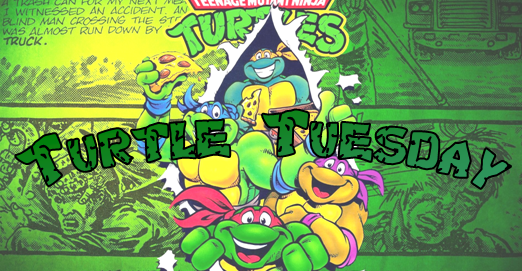

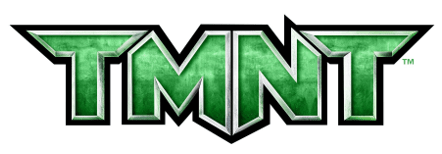




















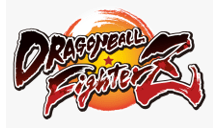







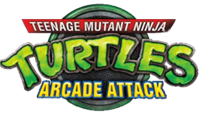




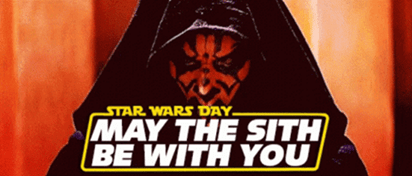














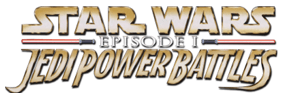























You must be logged in to post a comment.